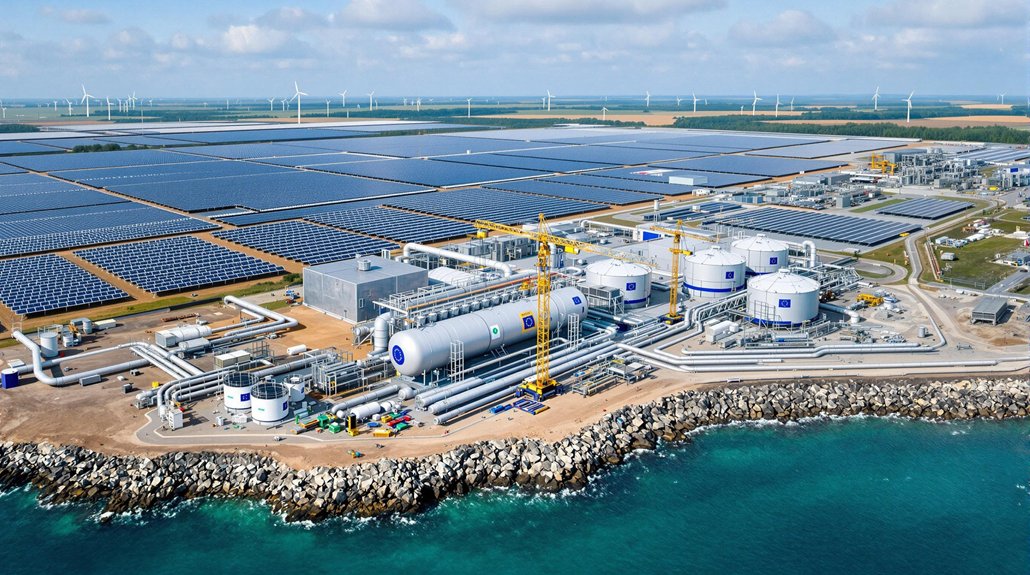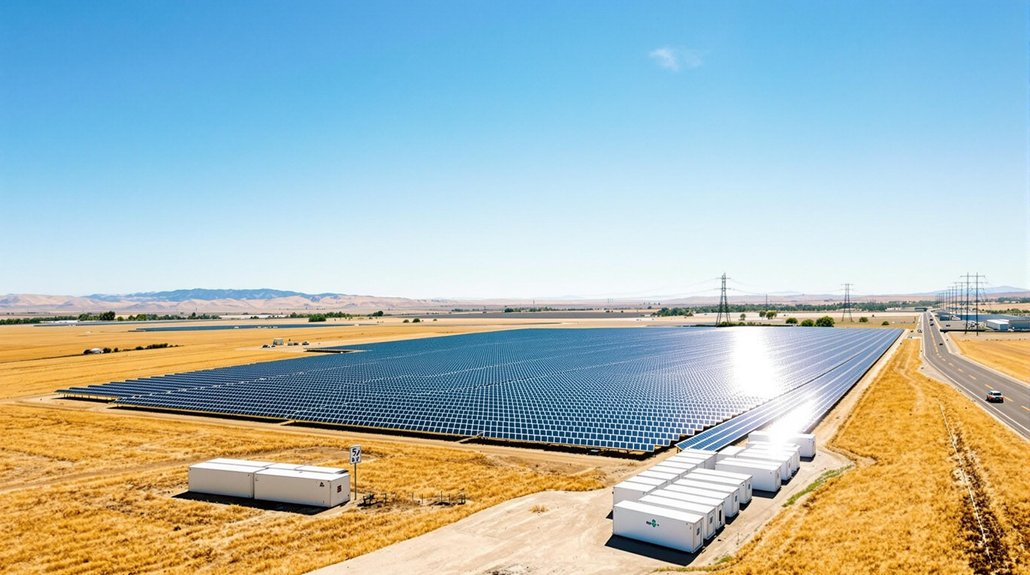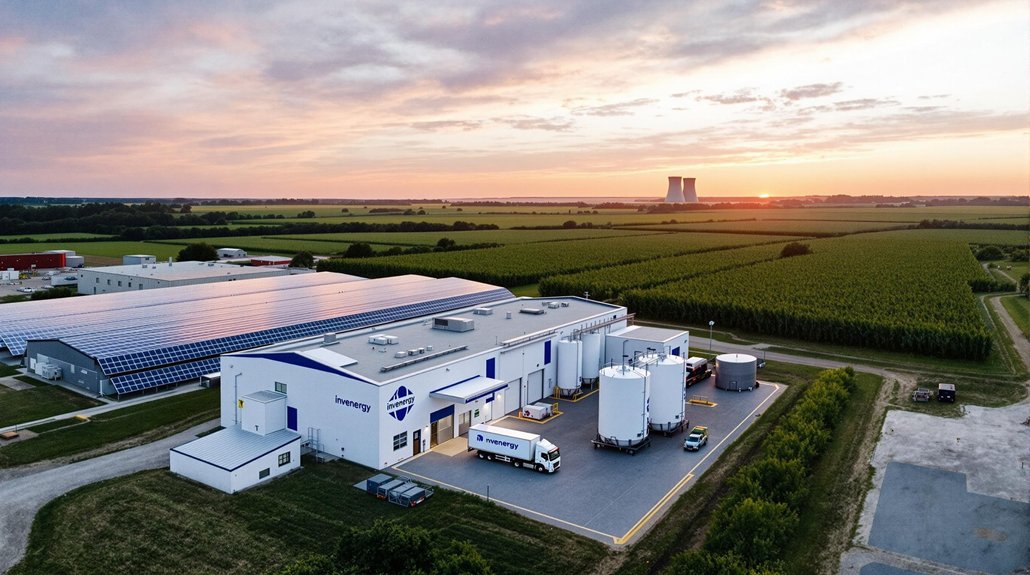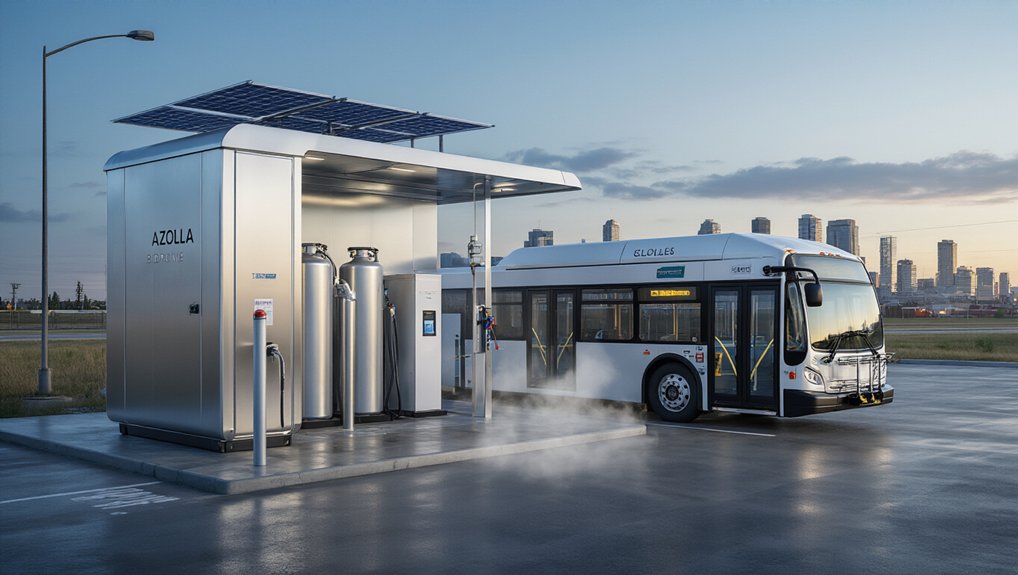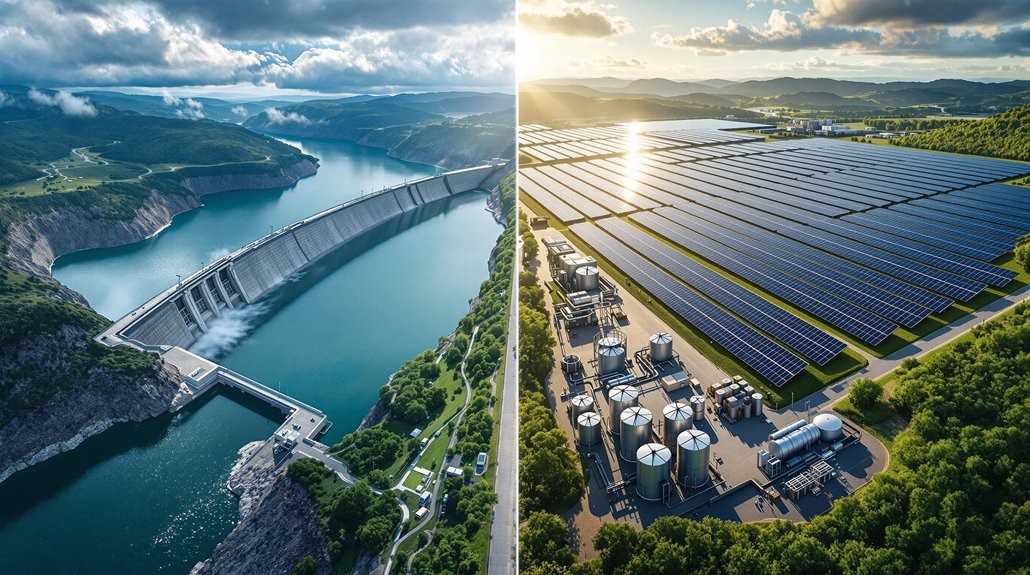Europe’s hydrogen revolution is kicking into high gear. While producing just 1% of global hydrogen cleanly now, Europe aims to generate 10 million tonnes of green hydrogen by 2030 and import another 10 million. Construction projects are popping up everywhere—Shell just dropped €1 billion on Holland Hydrogen I. China’s still leading with 40% of new capacity, but Europe’s not far behind at 32%. The price gap with fossil-based hydrogen should vanish by decade’s end. More breakthroughs await.
While the world struggles with its fossil fuel addiction, Europe is betting big on green hydrogen as its clean energy savior. The European Union has laid out ambitious plans to produce 10 million tonnes of green hydrogen domestically by 2030, with another 10 million tonnes to be imported. It’s not messing around.
The numbers tell the story. Globally, hydrogen production hit 97 million tonnes in 2023, but less than 1% was the clean stuff. Europe’s shooting for 20 million tonnes of renewable hydrogen by 2030. Quite the jump. Currently, only 1.4 GW of water electrolyser capacity exists, with potential growth to 5 GW by the end of 2024. Baby steps, but they’re getting faster.
Here’s where things get real: construction is actually happening. About 6.5 GW of electrolyser capacity reached final investment decision in the past year. Sure, 40% of that is in China, but Europe’s not far behind at 32%. The European Hydrogen Bank is tossing in 3 billion euros to get things moving. Not exactly pocket change. Shell’s landmark investment of €1 billion in Holland Hydrogen I demonstrates Europe’s serious commitment to becoming a hydrogen powerhouse.
Cost remains the elephant in the room. Green hydrogen currently costs up to six times more than the dirty fossil-based stuff. But that gap’s closing. By decade’s end, it could actually compete with blue hydrogen in many markets. It already does in China, Brazil, and India. Europe had a taste of competitiveness during the 2021 gas price spike. Funny how war and crisis can make renewables look better, isn’t it?
Green hydrogen’s price tag still bites, but war and crisis have a way of making clean energy suddenly look like a bargain.
Infrastructure is gearing up too. Europe could have an 18,000 km hydrogen pipeline network by 2030. The development of underground storage capacity is crucial for hydrogen to function effectively as an energy carrier. Manufacturing capacity for electrolysers might hit 7.65 GW annually by 2025. Not bad for a technology most people hadn’t heard of five years ago.
The market’s set to explode from $253.8 million in 2023 to a staggering $42 billion by 2033. That’s a 66.72% annual growth rate. And potentially 1.7 million new green jobs by 2040. This expansion mirrors the broader trend where renewable energy jobs are growing at twice the rate of the overall job market globally.
Europe’s hydrogen revolution isn’t just coming—it’s here, and it’s hiring.
